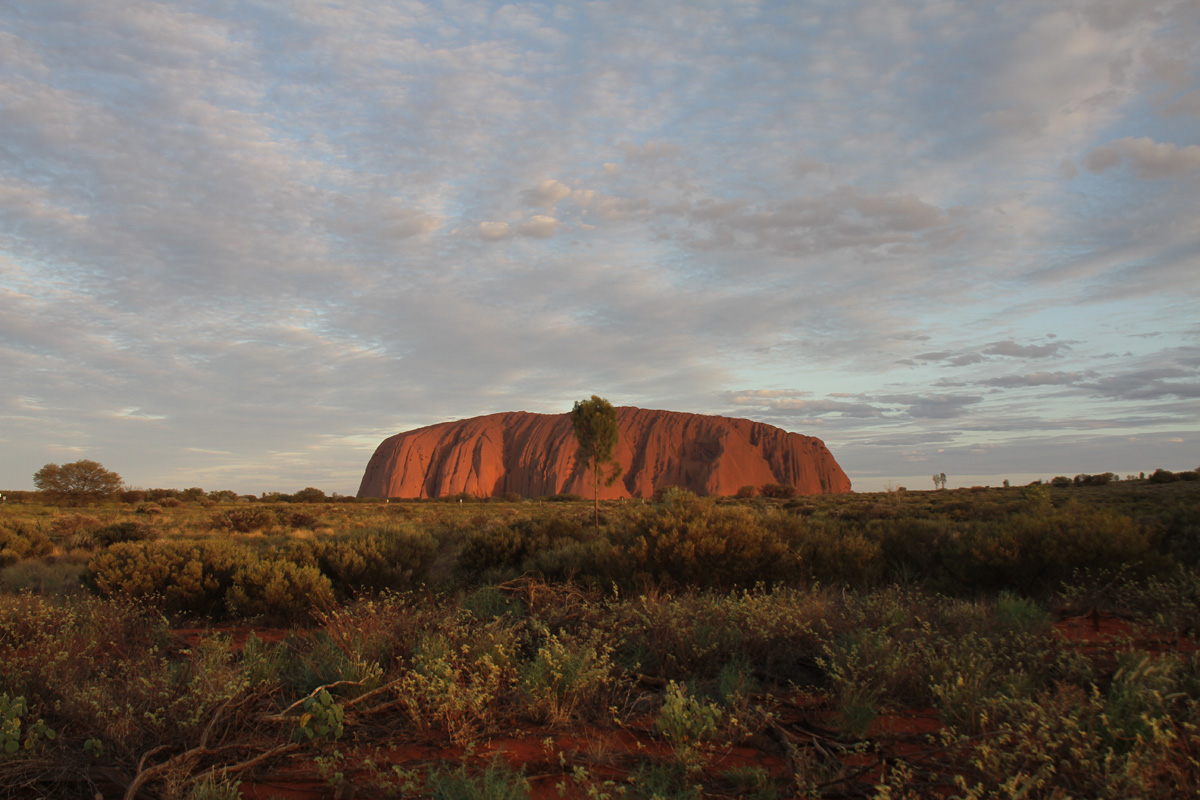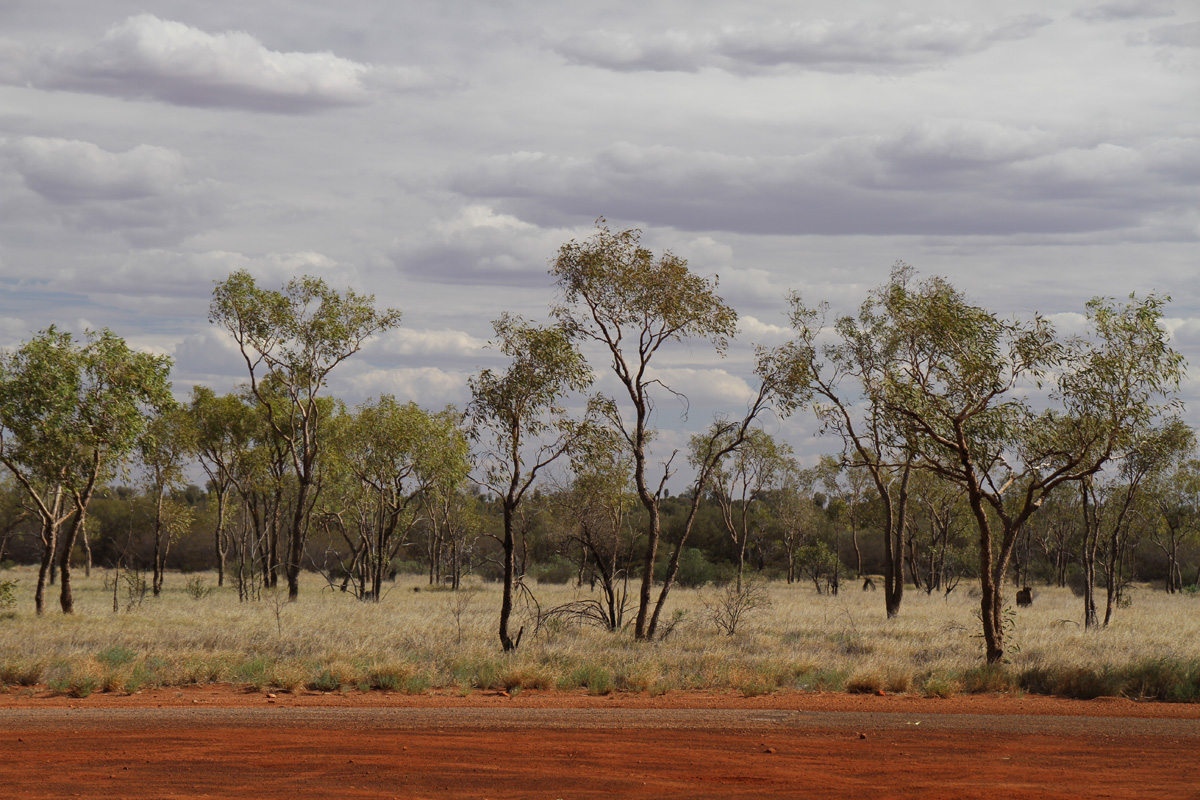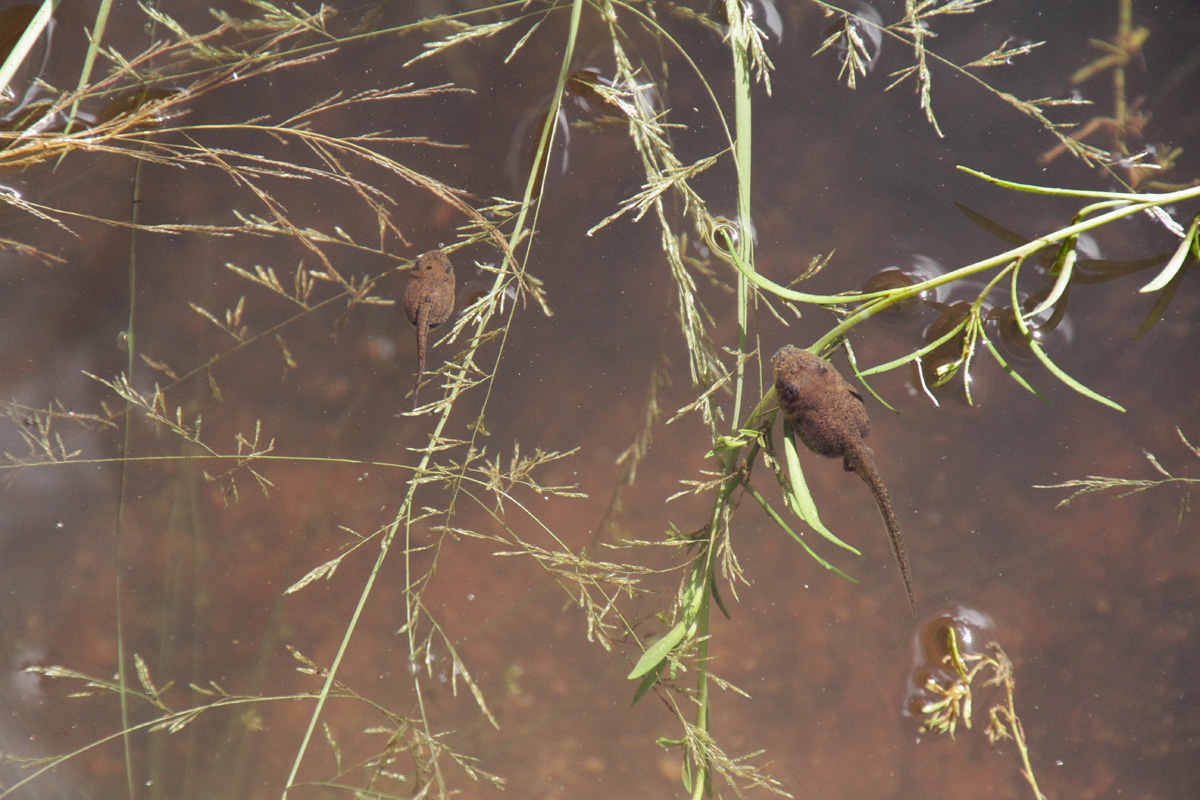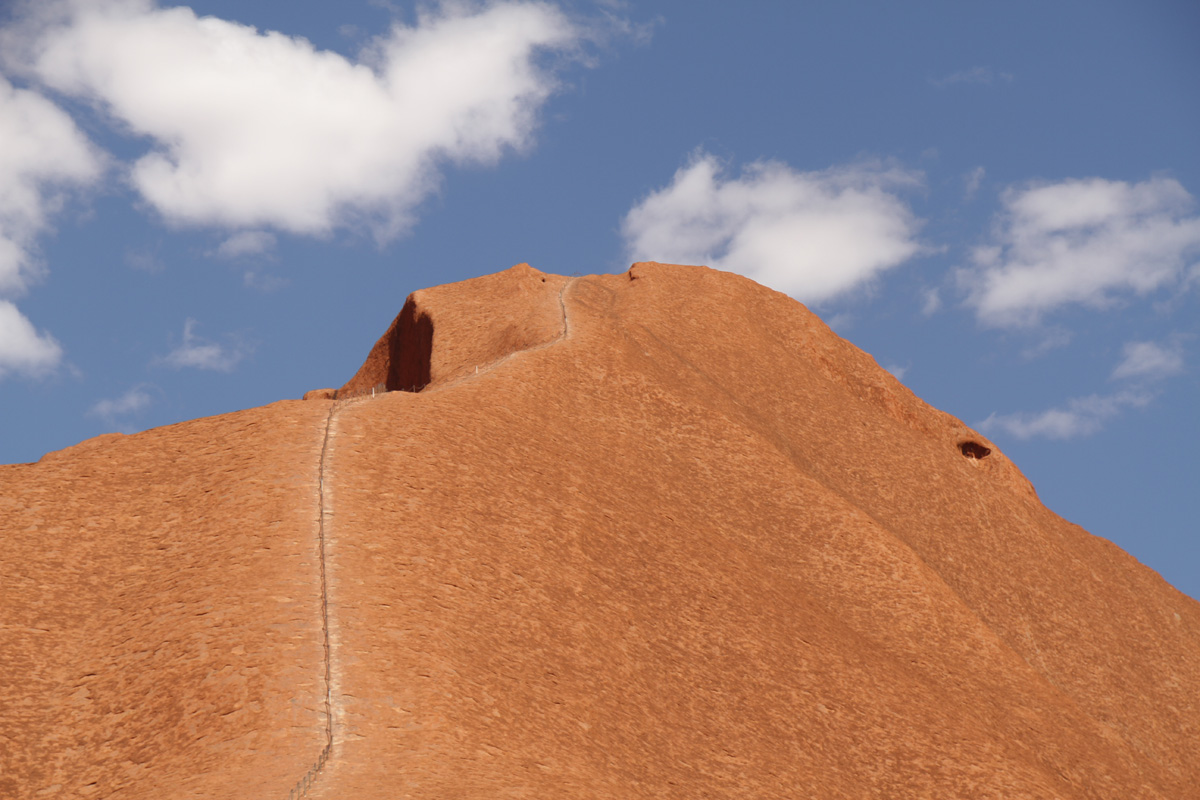A Day in Australia's Sacred Center
I didn’t need to take off my shoes to enter these temples, though I did cover my head with a scarf to avoid the unforgiving summertime sun. “We’re going to power through the first kilometer,” warned our guide, brushing his horseshoe mustache before adding, “See you in the shade.” Ten minutes later, our group congregated at a platform overlooking a curved opening not unlike a cathedral’s apse, the walls painted with a waterfall that quietly dripped into the pool at its base. We were in the shadow of one of nature’s most grandiose creations.
The famous red monolith in the middle of Australia, known as Uluru, Ayers Rock, or simply “The Rock,” is the kind of ethereal place that people travel the world over to see. A stunning beauty, Uluru is a photographer’s dream, slicing unabashedly out of the otherwise flat desert landscape. It has become a symbol of the Australian Outback, representative of the land of dingoes (some of which eat babies), kangaroos, and ultra-venomous snakes. In short, we couldn’t miss this place.
Five hours seemed a meager pilgrimage, considering the trip from Alice Springs to the remote Uluru-Kata Tjuta National Park took 3 days before the highways were built. We set out with Emu Run Tours on a bus with about 30 other eager tourists and two tireless guides, Tick and Mark.
“Over to your right, we’re coming up on a rare sight,” Tick remarked about 3 hours into the drive. The entire bus perked up, prepared for a glimpse. Tick and Mark had spent most of the journey teaching us about this vast territory and its humbling history. “If you look carefully, you’ll see an Australian Rubber Tree, with big black fruit hanging from its branches, distinguishable because it grows without foliage.” We rounded the bend and just then Tick burst into laughter. Rubber tires were strewn about a lone skeleton of a tree near the road. “Gotcha,” he said triumphantly. Cheeky Australians.
The park’s namesake behemoths, Uluru and Kata Tjuta, can be seen for miles in any direction, so it’s no wonder they became important meeting places for the Anangu, the group of aboriginal tribes who’ve lived here for over 30,000 years. Remarkably, the rocks also form the backbones of Anangu Creation Stories: in the absence of a written history, the natives use Uluru and Kata Tjuta as their physical records. Whereas organized religions have holy texts, the Anangu have these rocks. With their decipherable contours, the rocks are used as cues for recounting ancient stories that teach morals, social norms, cultural history, and even survival skills. Considering that the rocks are timeless, more permanent than any written words or man-made reminders of ancient stories, it’s a pretty ingenious system.
Staring at the simple shape of Uluru from afar, you’d never guess that this chunk of rock continues underground for kilometers. In fact, what we can see above ground is really just the tip of the iceberg. If you were to follow its underground geologic path twenty-five kilometers to the west, you’d arrive at Uluru’s lesser-known but just-as-sacred cousin, Kata Tjuta. To this day, the Anangu still use Kata Tjuta for their age-old rituals and ceremonies, during which times it is closed off to the public. A conglomerate sedimentary formation of 36 domes, its name means “many heads,” and it was borne out of the same uplifting process as Uluru some 500 million years ago. Though it’s not as iconic from a distance, it’s breathtakingly beautiful up close.
Red walls rose up on either side of me, plunging into the electric blue of the sky. The wind blew at my back, gently coaxing me deeper into Kata Tjuta’s Walpa Gorge. To my left, I could hear a stream that paralleled the path, hidden from view by bright green trees, bushes, and grasses, all guzzling from the stream’s lifeline of water. We took our time, stopping every few moments to snap photos, stare, and listen. Time slipped further away when we came upon a series of small ponds with tadpoles. They darted around just under the surface, seemingly oblivious to the fact that they were in a desert.
A faint horn sounded, jolting us out of our inquisitive daze. Was that our bus, sounding the final notice before pulling away? Sprinting the whole rest of the way back, we jumped on with smiles of exasperated relief plastered onto our faces, gasping for air. We weren’t even late; apparently the bus horn is a prank the guides pull on the last to board the bus. “Told you they’d be running!” Tick hooted as we took our seats.
Though some affectionately refer to it as such, Uluru is no ordinary rock. Even just saying the word feels like the start of a sacred chant: OOH-loo-roo. Its name has no translation, adding to its mystical allure, and its immense cultural significance really sets it apart from the average mountain. In the days leading up to my Uluru trip, I was sure that I’d want to climb the controversial path that leads to its summit. As a climber, I love to interact with rocks, experiencing them at close range, accepting their challenges. But after all that I’d learned about this sacred place, my mind had changed. The fact that these formations continue to play critical roles in the preservation of the world’s oldest surviving culture warrants, I think, some heavy respect.
Fortunately, the decision was made for us that day, with the climb to the top closed off due to the sweltering February heat. Instead, we followed our guides around parts of Uluru’s base, peering at 17,000-year-old murals, gazing up at temporary waterfalls from the previous day’s rains, and entering alcoves so sacred that, out of respect, photography was prohibited. In the end, it didn’t feel like we’d missed out on anything.
With the sun loosening its grip on the day, temperatures dropped to a much more palatable 90 degrees for our final stop. Even amid the hordes of camera-wielding tourists that were arriving by the busload, it was a serene scene. We sipped on cool champagne and nibbled our picnic dinners as the sun began its spectacular light show. Uluru reflected every color on the spectrum between red and purple. As the sun lowered, features that resembled buttresses cast shadows in stripes across its length until eventually the sun dipped below the horizon, leaving in its wake fluorescent clouds that hovered to the west over the silhouette of Kata Tjuta.
As I gazed out at the impressive figures before they disappeared into the dark, I slipped off my sandals and dug my feet into the warm red sand for one last chance to get closer to this place that is the heart of a continent, the soul of a civilization.












